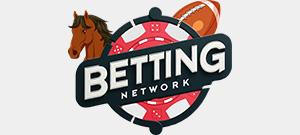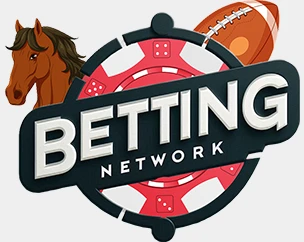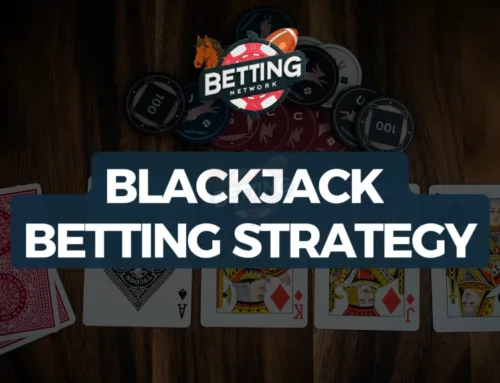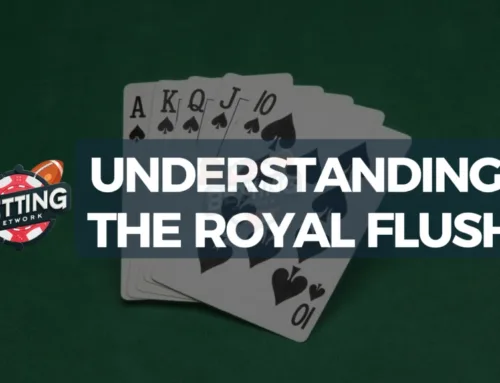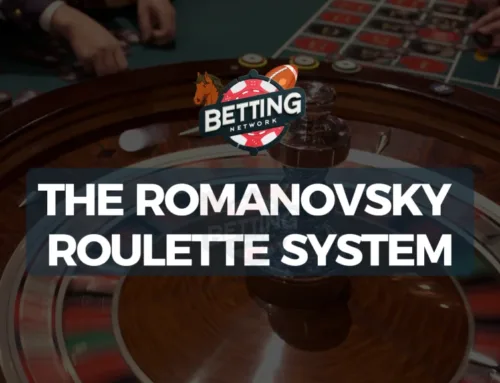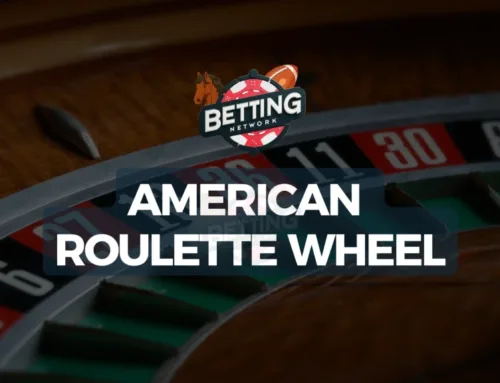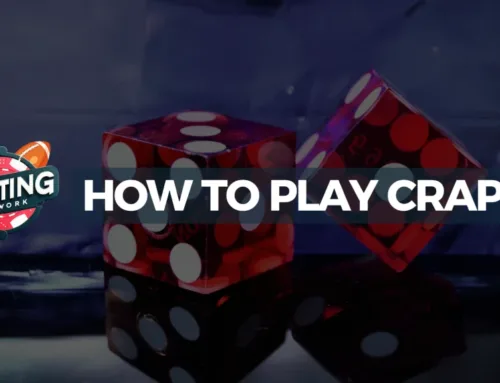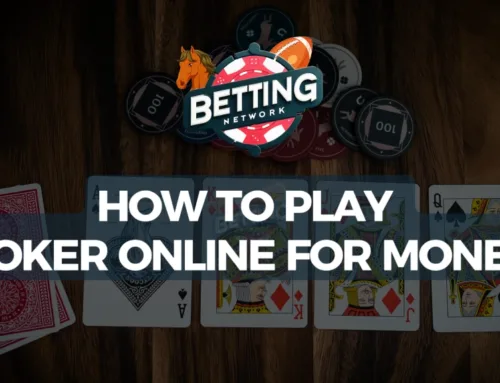Blackjack is the third most popular Casino game across the US, and it’s easy to understand why. It blends strategic depth, plenty of dopamine hits, and those big paydays we’re all chasing. Best of all? if you got your blackjack strategy essentials memorized, even an up-and-coming player can beat the house.
Whether you’re a beginner, or a seasoned pro, you can start refining and improving your blackjack strategy and boost your winnings, starting today!

Basic Blackjack Strategy: Abridged Version
Blackjack strategy essentials come from extensive mathematical analysis. It doesn’t consider a key factor, which is card counting.
We’ll explore what counting card means, but know this: counting cards is near impossible in online blackjack. If you’re playing live, be aware that many card rooms incorporate multiple decks and regular shuffling to deter card counters and preserve the house’s edge.
With that out of the way, let’s explore this basic blackjack strategy, which outlines the best actions based on your cards and what the dealer shows. Following this strategy cuts down the casino’s advantage:
Hit or Stand: Typically, hit if your total is less than 17 and the dealer’s card is high (7 to Ace); stand when the dealer has a lower card (2 to 6).
When to Double Down: Consider doubling down if you have a 10 or 11 and it totals more than the dealer’s showing card.
Splitting Pairs: Always split Aces and 8s. Avoid splitting 10s and 5s.
The Dealer’s Visible Card: This card is crucial for shaping your strategy to maximize wins.
You’ll notice we’ve added some additional moves: splitting pairs, doubling down and surrendering. Don’t worry, we’ll expand on that. But let’s go a bit deeper on hitting and standing with the help of a table.
Crash Course in Blackjack Strategy
This table will help you make split decisions on your favorite online blackjack with real money platform. Feel free to keep this tab opened while you play on your favorite blackjack platform!
When To Surrender:
| Category | Rule |
|---|---|
| When to Surrender |
|
| When to Split |
|
| Soft Totals |
|
| Hard Totals |
|
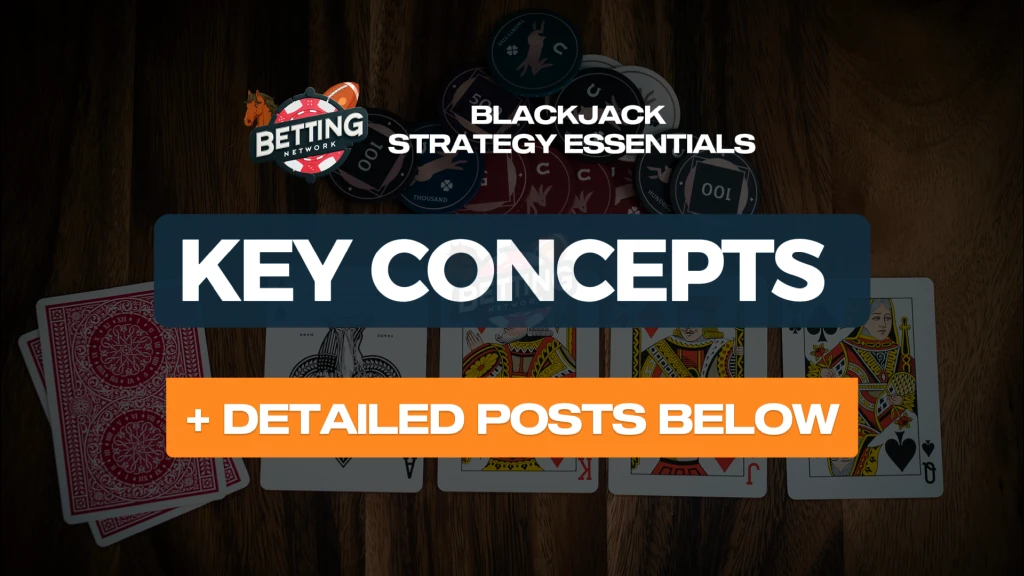
When and Why to Surrender
We’ve made a whole article about when to surrender in Blackjack. We highly recommend you check it out because it covers the topic with more nuance (and trust me, there’s a lot to consider!).
Let’s keep things simple for now:
16 against dealer 9 through Ace, and 15 against dealer 10: Using surrender in these situations is wise as it avoids probable losses against a strong dealer upcard. If allowed, surrendering these hands is usually recommended.
When and Why to Split
Always split Aces and 8s: This is a cornerstone of nearly every blackjack strategy essentials. It allows you to create new, stronger hands (each has better odds of beating the house).
Never split Tens: Avoid splitting tens because this action dismantles a strong hand of 20, potentially decreasing your winning odds. Many beginners get greedy think they’ll get a couple of aces after the split. Don’t be like them!
Splitting in Blackjack
Split 9s, except against dealer 7, and always stand with 9s against a dealer’s 7, 10, or Ace: this is also part of a blackjack strategy essentials playbook, and it helps you improve your odds based on the dealer’s card.
You can also split 7s, 6s, 4s, 3s, and 2s under certain conditions. We recommend you check out our when to split in Blackjack piece to understand why and when you should do this.
Topics like when to start splitting in blackjack are really must-knows. We go into a lot more detail in a separate post so feel free to check it out ( it really complements everything we’ve mentioned in this section)
Handling Soft Totals
Doubling down and standing rules: these rules are bold, but they help you prey on the dealer’s weak upcard. The house certainly has no mercy on you, so why would we?
We’ve also explored when to double down in blackjack in a separate piece, for those that want advanced knowledge.
Handling Hard Totals
Play conservatively on 17 and above, adjust strategies for 13 through 16 based on the dealer’s card. We’re mostly sidestepping busts when the dealer’s hand is weaker. Remember: baiting the house into busting is a valid strategy to winning, you don’t always need to hit 21.
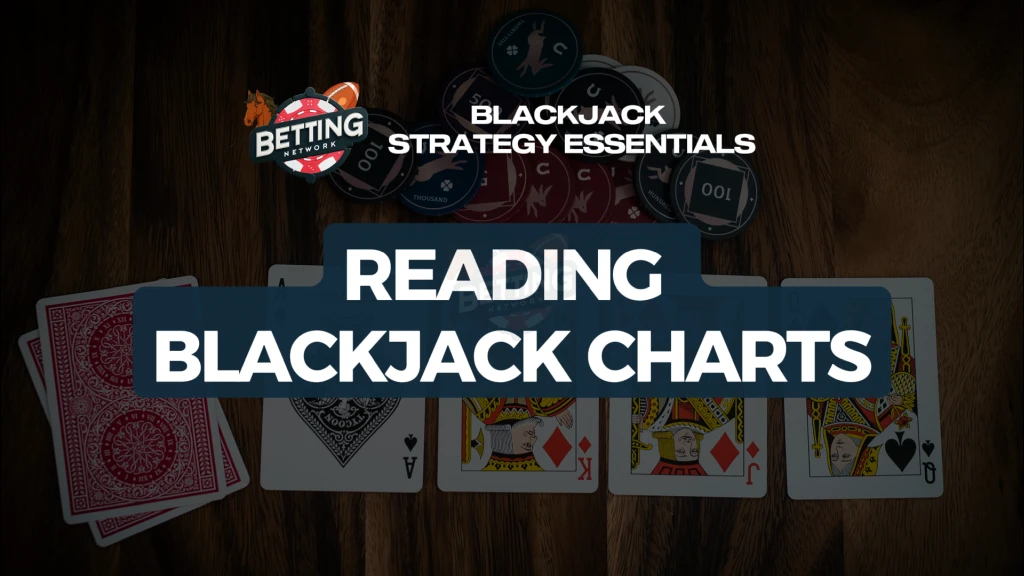
Understanding Detailed Strategy Charts
Blackjack strategy charts are huge when it comes to beating the house. Essentially, they’re visual aids that let you know what the best action is (hit, stand, double down, split) at any given hand, depending on the dealer’s upcard.
These charts allow you to make snappy judgements that result in more wins over time. Naturally, those who count cards have an even greater advantage when using these charts, but we’ll assume that’s not a possibility.
Reading the Charts:
Hard Hand Strategies: These apply to hands either without an Ace or where the Ace counts as one.
Soft Hand Strategies: These are for hands where the Ace is counted as eleven.
Split Strategies: These provide guidelines on when splitting pairs can maximize potential wins, enhancing your overall strategy.
We’ve created a series of charts that explain our basic blackjack strategy. If you’re a visual learner, you’ll definitely want to check it out!
Game Rule Variations
Here are some major game rule variations you’ll encounter both online and in live card rooms. These change the odds significantly, so beware.
Number of Decks: Many platforms and card rooms incorporate multiple decks into their games to deter card counters. It’s significantly harder to gauge whether the count is high (higher likelihood of cards between 8-10 appearing) or low (higher chances of cards with smaller counts appearing).
Dealer’s Action on Soft 17: Whether the dealer stands or hits on a soft 17 impacts your decisions, especially about whether to stand or hit on a soft 18. You’ll want to be aggressive and double down or split if the dealer likes to stand on a soft 17.
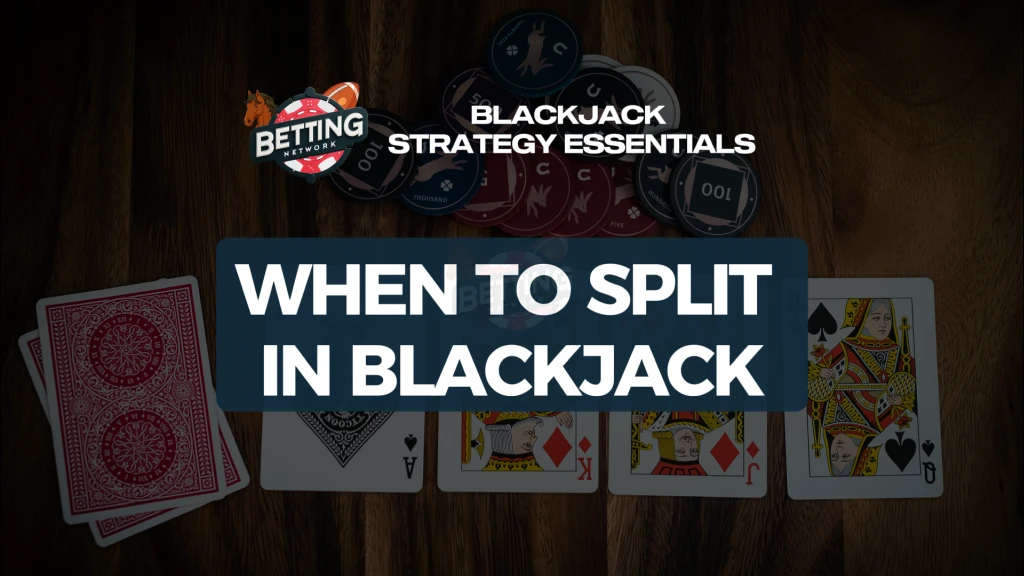
Understanding When to Split in Blackjack
Splitting allows you to transform a crummy hand into two substantially better hands, each with superior winning odds. This is how you turn losing hands into chips multipliers. We already linked our when to split in blackjack piece before, but this is your reminder to take a closer look after you’re done here!
Here’s the basics:
If dealt two cards of the same rank (like two 8s or two Kings), you can split them:
- Place an additional bet equal to the original for the second hand.
- Play each hand separately, taking further cards as needed.
Each hand becomes a new scenario, and each requires you to make the right move depending on the dealer’s upcard. This requires you to have a quicker mind, so inexperienced player often avoid splitting in blackjack.
If you’re just practicing or playing for free, there’s no reason not to though. You’ll incorporate this into your long-term playbook, so might as well start splitting early.
Strategic Considerations
Always split Aces and 8s. Aces offer a shot at dual 21s (big time payouts), and 8s can transform a weak 16 into two stronger hands. It’s a strong move to make, it should be part of your blackjack strategy essentials playbook.
Avoid splitting 10s or face cards since a total of 20 is already a strong hand likely to win.
Benefits of Splitting
Splitting could double your wins if both new hands prevail. Splitting can also lessen potential losses by breaking up weaker hands, especially beneficial with 8s. It can be an aggressive or a defensive move depending on the context.
Keep in mind that splitting requires doubling your stake, which could increase your loss if both hands fail. While splitting can be potent, it’s crucial not to overdo it. Play on free platforms, get a good grasp of this concept and then you can comfortably bet real money with this powerful move.
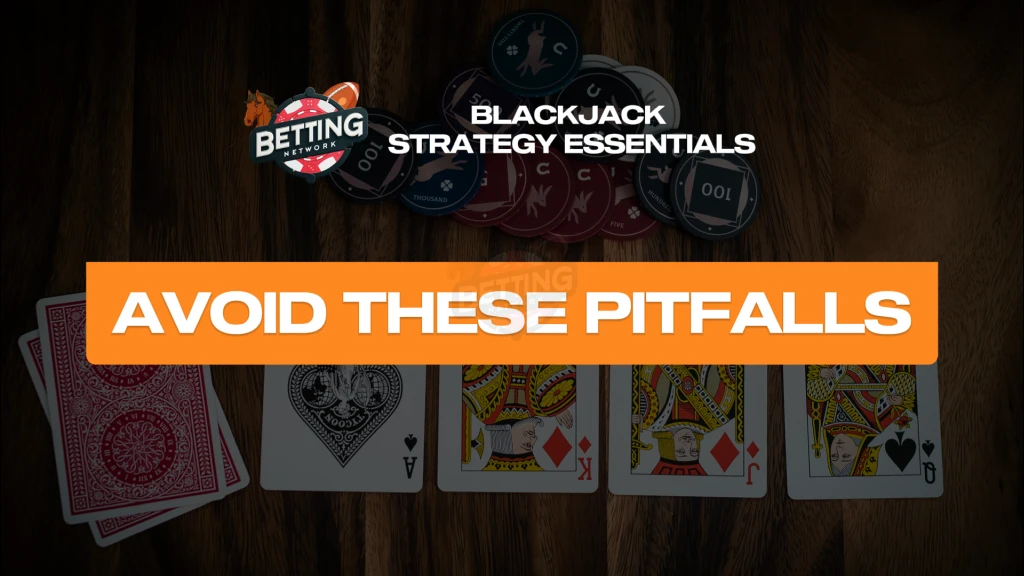
Common Mistakes and Misconceptions in Blackjack
Here are some of the most common errors you’ll want to avoid when implementing our blackjack strategy essentials.
Mistake #1: Thinking Insurance and Even Money Bets Are the Same
In blackjack, “Insurance” and “Even Money” bets are options under certain conditions. These are very niche moves, meaning that they’re only good under certain conditions, otherwise they’re pretty bad.
Here’s a straightforward breakdown of each to clarify their differences and usage.
Insurance Bets
Insurance is available when the dealer’s visible card is an Ace, heightening the possibility of the dealer achieving a blackjack.
You may bet on insurance if you suspect the dealer’s hidden card is a 10 or face card, which would result in a blackjack. This bet is half the amount of your initial wager.
Payout: If the dealer hits blackjack, the insurance pays 2:1, allowing you to break even on the round if your original bet is lost (unless you also have blackjack). If the dealer doesn’t hit blackjack, the insurance bet is lost, and the game proceeds.
Statistically, insurance is not advisable unless you’re card counting and aware that many 10-value cards are still in play.
Even Money Bets
This option is only available when you have a blackjack and the dealer’s face-up card is an Ace, acting as a specific form of insurance. Taking even money means you’re betting that the dealer will also have blackjack, leading to a tie. This guarantees a 1:1 payout for your blackjack, instead of the normal 3:2.
If you decide to go for even money, you’ll get a payout equal to your original bet, regardless of whether the dealer completes a blackjack.
Even money is, statistically, a bad move over time. You’ll often sacrifice a higher payout.
Key Differences
Context of Offer: Insurance is available whenever the dealer shows an Ace, regardless of your cards. Even money is only possible when you have a blackjack and the dealer shows an Ace.
Payout Outcome: Insurance is designed to offset a loss in your original bet. Even money ensures a guaranteed payout for your blackjack, at the expense of a potential 3:2 win.
Both insurance and even money bets are designed to safeguard against dealer blackjacks. But, most of the times, they benefit the house. If you’re a new player, avoid these options for now. Once you’ve played enough, you’ll realize the very nice scenarios where these moves can make all the difference.
If you’re a seasoned pro, then you’ll want to maximize your insurance and even money bets to minimize losses and go green at the end of the session. We have a whole article about insurance in Blackjack, and trust me, you’ll want to read it!
Mistake #2: Poor Game Selection
Please, please learn the differences between single and multiple deck blackjack games! Here’s a basic rundown to make sure you don’t get trapped:
Single Deck Blackjack
This version is ideal for new players due to its simplicity. A single deck makes it easier to count cards and minimize the house’s edge. The odds are more favorable in single-deck games because the relative proportion of face cards to the total number of cards increases, enhancing the chance of hitting a blackjack.
Multiple Decks Blackjack
You’ll typically find blackjack games using multiple decks—often 4, 6, or 8—dealt from a shoe, a device designed to hold multiple decks and facilitate faster dealing.
The house edge increases with the number of decks used. This decrease in player odds is partly due to the lower probability of drawing a blackjack, while the payout ratios stay consistent, regardless of deck quantity.
You might think this is a bit dirty, but casinos are a business. Only skilled gamblers that play the long game come out on top and make a living off blackjack. It’s certainly possible, but it takes practice and patience.
Also, keep in mind that some plays won’t work on multi-deck games. Our basic blackjack strategy won’t be as effective with dealers that incorporate multiple decks.
With more decks, card counting loses some effectiveness. The increased number of cards dilutes the significance of tracking any single card, complicating accurate predictions.
Why Casinos Prefer Multiple Decks
A primary motivation for casinos using multiple decks is to discourage card counting. This guarantees the house edge, and forces you to calculate odds at lightning speed on each hand (which takes practice). Multiple decks also allow for faster games, as the dealer spends less time shuffling between games compared to single-deck play.
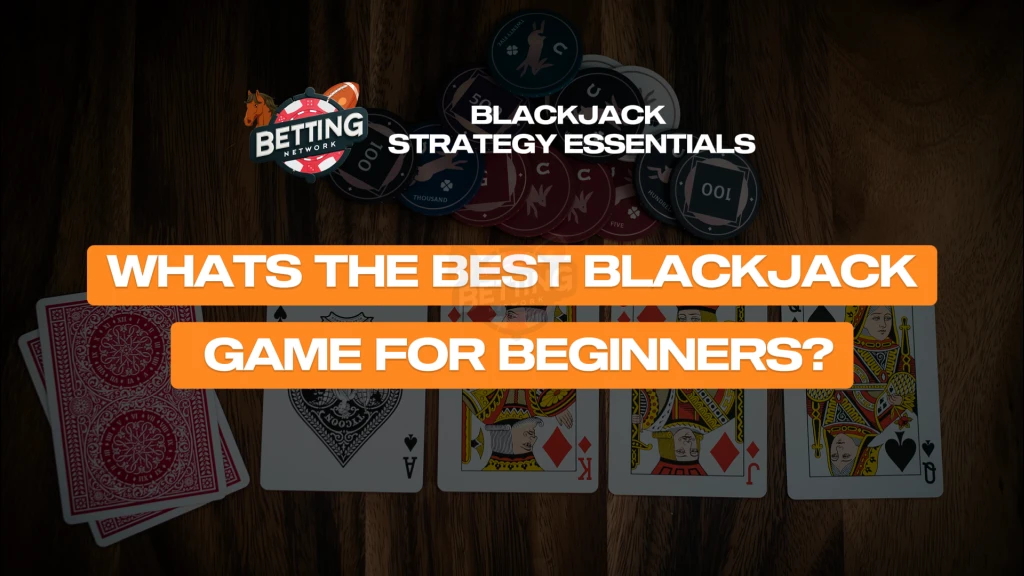
Best Blackjack Game for Beginners
Start with single deck games, if possible, as they are simpler and could be more profitable. Be mindful that such games are rarer and may feature altered rules to offset the lower house edge, such as reduced blackjack payouts.
Follow our basic blackjack strategy and charts, and you’ll find yourself racking wins over time. However, please manage your expectations, since payouts aren’t nearly as good as what you’ll find in Multiple Deck Blackjack games. Remember to always exercise discipline and good judgement when putting money on the line.
If you’re just practicing with no money on the line, though, you’ll want to start with single deck games to learn the ropes.
Mistake #3: Thinking Card Counting is Flawless
While card counting can offer an advantage, it is a complex strategy that’s separate from basic blackjack strategy and not a guaranteed path to success. A lot of newbies think they can Rainman their way out of crappy hands, but instead end up 5 grands lighter and rain dancing their way to some homeless commune.
Please understand this is not an infallible technique. You can mess up the count and suffer major losses, and most online platforms won’t even let you count cards effectively.
Other Common Mistakes
Incorrect Hitting: Players often mistakenly hit on hard totals of 12 to 16 based on the dealer’s upcard. You can skip making this mistake. I know I should’ve when i first started!
Incorrect Standing: This error typically happens with soft totals, where players play too cautiously. Check your blackjack strategy charts and you’ll be golden.
Correcting these requires practice and dedication to the game. You’ll find yourself minimizing mistakes, losses and going big on statistically-favorable bets. If you want to shorten this process, keep reading!
FAQs on Basic Blackjack Strategy
Why should I always follow the basic strategy?
It minimizes the house edge and maximizes your potential for winning based on statistical analysis of possible outcomes.
What do I do if I forget the strategy during a game?
Try to stick to the fundamental rules of hitting on 16 or less and standing on 17 or more if charts aren’t available.
How do “soft” and “hard” hands affect my game strategy?
Soft hands offer more flexibility and less risk of busting, which influences more aggressive plays like hitting or doubling down.
Blackjack is the third most popular Casino game across the US, and it’s easy to understand why. It blends strategic depth, plenty of dopamine hits, and those big paydays we’re all chasing. Best of all? if you got your blackjack strategy essentials memorized, even an up-and-coming player can beat the house.
Whether you’re a beginner, or a seasoned pro, you can start refining and improving your blackjack strategy and boost your winnings, starting today!

Basic Blackjack Strategy: Abridged Version
Blackjack strategy essentials come from extensive mathematical analysis. It doesn’t consider a key factor, which is card counting.
We’ll explore what counting card means, but know this: counting cards is near impossible in online blackjack. If you’re playing live, be aware that many card rooms incorporate multiple decks and regular shuffling to deter card counters and preserve the house’s edge.
With that out of the way, let’s explore this basic blackjack strategy, which outlines the best actions based on your cards and what the dealer shows. Following this strategy cuts down the casino’s advantage:
Hit or Stand: Typically, hit if your total is less than 17 and the dealer’s card is high (7 to Ace); stand when the dealer has a lower card (2 to 6).
When to Double Down: Consider doubling down if you have a 10 or 11 and it totals more than the dealer’s showing card.
Splitting Pairs: Always split Aces and 8s. Avoid splitting 10s and 5s.
The Dealer’s Visible Card: This card is crucial for shaping your strategy to maximize wins.
You’ll notice we’ve added some additional moves: splitting pairs, doubling down and surrendering. Don’t worry, we’ll expand on that. But let’s go a bit deeper on hitting and standing with the help of a table.
Crash Course in Blackjack Strategy
This table will help you make split decisions on your favorite online blackjack with real money platform. Feel free to keep this tab opened while you play on your favorite blackjack platform!
When To Surrender:
| Category | Rule |
|---|---|
| When to Surrender |
|
| When to Split |
|
| Soft Totals |
|
| Hard Totals |
|

When and Why to Surrender
We’ve made a whole article about when to surrender in Blackjack. We highly recommend you check it out because it covers the topic with more nuance (and trust me, there’s a lot to consider!).
Let’s keep things simple for now:
16 against dealer 9 through Ace, and 15 against dealer 10: Using surrender in these situations is wise as it avoids probable losses against a strong dealer upcard. If allowed, surrendering these hands is usually recommended.
When and Why to Split
Always split Aces and 8s: This is a cornerstone of nearly every blackjack strategy essentials. It allows you to create new, stronger hands (each has better odds of beating the house).
Never split Tens: Avoid splitting tens because this action dismantles a strong hand of 20, potentially decreasing your winning odds. Many beginners get greedy think they’ll get a couple of aces after the split. Don’t be like them!
Splitting in Blackjack
Split 9s, except against dealer 7, and always stand with 9s against a dealer’s 7, 10, or Ace: this is also part of a blackjack strategy essentials playbook, and it helps you improve your odds based on the dealer’s card.
You can also split 7s, 6s, 4s, 3s, and 2s under certain conditions. We recommend you check out our when to split in Blackjack piece to understand why and when you should do this.
Topics like when to start splitting in blackjack are really must-knows. We go into a lot more detail in a separate post so feel free to check it out ( it really complements everything we’ve mentioned in this section)
Handling Soft Totals
Doubling down and standing rules: these rules are bold, but they help you prey on the dealer’s weak upcard. The house certainly has no mercy on you, so why would we?
We’ve also explored when to double down in blackjack in a separate piece, for those that want advanced knowledge.
Handling Hard Totals
Play conservatively on 17 and above, adjust strategies for 13 through 16 based on the dealer’s card. We’re mostly sidestepping busts when the dealer’s hand is weaker. Remember: baiting the house into busting is a valid strategy to winning, you don’t always need to hit 21.

Understanding Detailed Strategy Charts
Blackjack strategy charts are huge when it comes to beating the house. Essentially, they’re visual aids that let you know what the best action is (hit, stand, double down, split) at any given hand, depending on the dealer’s upcard.
These charts allow you to make snappy judgements that result in more wins over time. Naturally, those who count cards have an even greater advantage when using these charts, but we’ll assume that’s not a possibility.
Reading the Charts:
Hard Hand Strategies: These apply to hands either without an Ace or where the Ace counts as one.
Soft Hand Strategies: These are for hands where the Ace is counted as eleven.
Split Strategies: These provide guidelines on when splitting pairs can maximize potential wins, enhancing your overall strategy.
We’ve created a series of charts that explain our basic blackjack strategy. If you’re a visual learner, you’ll definitely want to check it out!
Game Rule Variations
Here are some major game rule variations you’ll encounter both online and in live card rooms. These change the odds significantly, so beware.
Number of Decks: Many platforms and card rooms incorporate multiple decks into their games to deter card counters. It’s significantly harder to gauge whether the count is high (higher likelihood of cards between 8-10 appearing) or low (higher chances of cards with smaller counts appearing).
Dealer’s Action on Soft 17: Whether the dealer stands or hits on a soft 17 impacts your decisions, especially about whether to stand or hit on a soft 18. You’ll want to be aggressive and double down or split if the dealer likes to stand on a soft 17.

Understanding When to Split in Blackjack
Splitting allows you to transform a crummy hand into two substantially better hands, each with superior winning odds. This is how you turn losing hands into chips multipliers. We already linked our when to split in blackjack piece before, but this is your reminder to take a closer look after you’re done here!
Here’s the basics:
If dealt two cards of the same rank (like two 8s or two Kings), you can split them:
- Place an additional bet equal to the original for the second hand.
- Play each hand separately, taking further cards as needed.
Each hand becomes a new scenario, and each requires you to make the right move depending on the dealer’s upcard. This requires you to have a quicker mind, so inexperienced player often avoid splitting in blackjack.
If you’re just practicing or playing for free, there’s no reason not to though. You’ll incorporate this into your long-term playbook, so might as well start splitting early.
Strategic Considerations
Always split Aces and 8s. Aces offer a shot at dual 21s (big time payouts), and 8s can transform a weak 16 into two stronger hands. It’s a strong move to make, it should be part of your blackjack strategy essentials playbook.
Avoid splitting 10s or face cards since a total of 20 is already a strong hand likely to win.
Benefits of Splitting
Splitting could double your wins if both new hands prevail. Splitting can also lessen potential losses by breaking up weaker hands, especially beneficial with 8s. It can be an aggressive or a defensive move depending on the context.
Keep in mind that splitting requires doubling your stake, which could increase your loss if both hands fail. While splitting can be potent, it’s crucial not to overdo it. Play on free platforms, get a good grasp of this concept and then you can comfortably bet real money with this powerful move.

Common Mistakes and Misconceptions in Blackjack
Here are some of the most common errors you’ll want to avoid when implementing our blackjack strategy essentials.
Mistake #1: Thinking Insurance and Even Money Bets Are the Same
In blackjack, “Insurance” and “Even Money” bets are options under certain conditions. These are very niche moves, meaning that they’re only good under certain conditions, otherwise they’re pretty bad.
Here’s a straightforward breakdown of each to clarify their differences and usage.
Insurance Bets
Insurance is available when the dealer’s visible card is an Ace, heightening the possibility of the dealer achieving a blackjack.
You may bet on insurance if you suspect the dealer’s hidden card is a 10 or face card, which would result in a blackjack. This bet is half the amount of your initial wager.
Payout: If the dealer hits blackjack, the insurance pays 2:1, allowing you to break even on the round if your original bet is lost (unless you also have blackjack). If the dealer doesn’t hit blackjack, the insurance bet is lost, and the game proceeds.
Statistically, insurance is not advisable unless you’re card counting and aware that many 10-value cards are still in play.
Even Money Bets
This option is only available when you have a blackjack and the dealer’s face-up card is an Ace, acting as a specific form of insurance. Taking even money means you’re betting that the dealer will also have blackjack, leading to a tie. This guarantees a 1:1 payout for your blackjack, instead of the normal 3:2.
If you decide to go for even money, you’ll get a payout equal to your original bet, regardless of whether the dealer completes a blackjack.
Even money is, statistically, a bad move over time. You’ll often sacrifice a higher payout.
Key Differences
Context of Offer: Insurance is available whenever the dealer shows an Ace, regardless of your cards. Even money is only possible when you have a blackjack and the dealer shows an Ace.
Payout Outcome: Insurance is designed to offset a loss in your original bet. Even money ensures a guaranteed payout for your blackjack, at the expense of a potential 3:2 win.
Both insurance and even money bets are designed to safeguard against dealer blackjacks. But, most of the times, they benefit the house. If you’re a new player, avoid these options for now. Once you’ve played enough, you’ll realize the very nice scenarios where these moves can make all the difference.
If you’re a seasoned pro, then you’ll want to maximize your insurance and even money bets to minimize losses and go green at the end of the session. We have a whole article about insurance in Blackjack, and trust me, you’ll want to read it!
Mistake #2: Poor Game Selection
Please, please learn the differences between single and multiple deck blackjack games! Here’s a basic rundown to make sure you don’t get trapped:
Single Deck Blackjack
This version is ideal for new players due to its simplicity. A single deck makes it easier to count cards and minimize the house’s edge. The odds are more favorable in single-deck games because the relative proportion of face cards to the total number of cards increases, enhancing the chance of hitting a blackjack.
Multiple Decks Blackjack
You’ll typically find blackjack games using multiple decks—often 4, 6, or 8—dealt from a shoe, a device designed to hold multiple decks and facilitate faster dealing.
The house edge increases with the number of decks used. This decrease in player odds is partly due to the lower probability of drawing a blackjack, while the payout ratios stay consistent, regardless of deck quantity.
You might think this is a bit dirty, but casinos are a business. Only skilled gamblers that play the long game come out on top and make a living off blackjack. It’s certainly possible, but it takes practice and patience.
Also, keep in mind that some plays won’t work on multi-deck games. Our basic blackjack strategy won’t be as effective with dealers that incorporate multiple decks.
With more decks, card counting loses some effectiveness. The increased number of cards dilutes the significance of tracking any single card, complicating accurate predictions.
Why Casinos Prefer Multiple Decks
A primary motivation for casinos using multiple decks is to discourage card counting. This guarantees the house edge, and forces you to calculate odds at lightning speed on each hand (which takes practice). Multiple decks also allow for faster games, as the dealer spends less time shuffling between games compared to single-deck play.

Best Blackjack Game for Beginners
Start with single deck games, if possible, as they are simpler and could be more profitable. Be mindful that such games are rarer and may feature altered rules to offset the lower house edge, such as reduced blackjack payouts.
Follow our basic blackjack strategy and charts, and you’ll find yourself racking wins over time. However, please manage your expectations, since payouts aren’t nearly as good as what you’ll find in Multiple Deck Blackjack games. Remember to always exercise discipline and good judgement when putting money on the line.
If you’re just practicing with no money on the line, though, you’ll want to start with single deck games to learn the ropes.
Mistake #3: Thinking Card Counting is Flawless
While card counting can offer an advantage, it is a complex strategy that’s separate from basic blackjack strategy and not a guaranteed path to success. A lot of newbies think they can Rainman their way out of crappy hands, but instead end up 5 grands lighter and rain dancing their way to some homeless commune.
Please understand this is not an infallible technique. You can mess up the count and suffer major losses, and most online platforms won’t even let you count cards effectively.
Other Common Mistakes
Incorrect Hitting: Players often mistakenly hit on hard totals of 12 to 16 based on the dealer’s upcard. You can skip making this mistake. I know I should’ve when i first started!
Incorrect Standing: This error typically happens with soft totals, where players play too cautiously. Check your blackjack strategy charts and you’ll be golden.
Correcting these requires practice and dedication to the game. You’ll find yourself minimizing mistakes, losses and going big on statistically-favorable bets. If you want to shorten this process, keep reading!
FAQs on Basic Blackjack Strategy
Why should I always follow the basic strategy?
It minimizes the house edge and maximizes your potential for winning based on statistical analysis of possible outcomes.
What do I do if I forget the strategy during a game?
Try to stick to the fundamental rules of hitting on 16 or less and standing on 17 or more if charts aren’t available.
How do “soft” and “hard” hands affect my game strategy?
Soft hands offer more flexibility and less risk of busting, which influences more aggressive plays like hitting or doubling down.
Blackjack is the third most popular Casino game across the US, and it’s easy to understand why. It blends strategic depth, plenty of dopamine hits, and those big paydays we’re all chasing. Best of all? if you got your blackjack strategy essentials memorized, even an up-and-coming player can beat the house.
Whether you’re a beginner, or a seasoned pro, you can start refining and improving your blackjack strategy and boost your winnings, starting today!

Basic Blackjack Strategy: Abridged Version
Blackjack strategy essentials come from extensive mathematical analysis. It doesn’t consider a key factor, which is card counting.
We’ll explore what counting card means, but know this: counting cards is near impossible in online blackjack. If you’re playing live, be aware that many card rooms incorporate multiple decks and regular shuffling to deter card counters and preserve the house’s edge.
With that out of the way, let’s explore this basic blackjack strategy, which outlines the best actions based on your cards and what the dealer shows. Following this strategy cuts down the casino’s advantage:
Hit or Stand: Typically, hit if your total is less than 17 and the dealer’s card is high (7 to Ace); stand when the dealer has a lower card (2 to 6).
When to Double Down: Consider doubling down if you have a 10 or 11 and it totals more than the dealer’s showing card.
Splitting Pairs: Always split Aces and 8s. Avoid splitting 10s and 5s.
The Dealer’s Visible Card: This card is crucial for shaping your strategy to maximize wins.
You’ll notice we’ve added some additional moves: splitting pairs, doubling down and surrendering. Don’t worry, we’ll expand on that. But let’s go a bit deeper on hitting and standing with the help of a table.
Crash Course in Blackjack Strategy
This table will help you make split decisions on your favorite online blackjack with real money platform. Feel free to keep this tab opened while you play on your favorite blackjack platform!
When To Surrender:
| Category | Rule |
|---|---|
| When to Surrender |
|
| When to Split |
|
| Soft Totals |
|
| Hard Totals |
|

When and Why to Surrender
We’ve made a whole article about when to surrender in Blackjack. We highly recommend you check it out because it covers the topic with more nuance (and trust me, there’s a lot to consider!).
Let’s keep things simple for now:
16 against dealer 9 through Ace, and 15 against dealer 10: Using surrender in these situations is wise as it avoids probable losses against a strong dealer upcard. If allowed, surrendering these hands is usually recommended.
When and Why to Split
Always split Aces and 8s: This is a cornerstone of nearly every blackjack strategy essentials. It allows you to create new, stronger hands (each has better odds of beating the house).
Never split Tens: Avoid splitting tens because this action dismantles a strong hand of 20, potentially decreasing your winning odds. Many beginners get greedy think they’ll get a couple of aces after the split. Don’t be like them!
Splitting in Blackjack
Split 9s, except against dealer 7, and always stand with 9s against a dealer’s 7, 10, or Ace: this is also part of a blackjack strategy essentials playbook, and it helps you improve your odds based on the dealer’s card.
You can also split 7s, 6s, 4s, 3s, and 2s under certain conditions. We recommend you check out our when to split in Blackjack piece to understand why and when you should do this.
Topics like when to start splitting in blackjack are really must-knows. We go into a lot more detail in a separate post so feel free to check it out ( it really complements everything we’ve mentioned in this section)
Handling Soft Totals
Doubling down and standing rules: these rules are bold, but they help you prey on the dealer’s weak upcard. The house certainly has no mercy on you, so why would we?
We’ve also explored when to double down in blackjack in a separate piece, for those that want advanced knowledge.
Handling Hard Totals
Play conservatively on 17 and above, adjust strategies for 13 through 16 based on the dealer’s card. We’re mostly sidestepping busts when the dealer’s hand is weaker. Remember: baiting the house into busting is a valid strategy to winning, you don’t always need to hit 21.

Understanding Detailed Strategy Charts
Blackjack strategy charts are huge when it comes to beating the house. Essentially, they’re visual aids that let you know what the best action is (hit, stand, double down, split) at any given hand, depending on the dealer’s upcard.
These charts allow you to make snappy judgements that result in more wins over time. Naturally, those who count cards have an even greater advantage when using these charts, but we’ll assume that’s not a possibility.
Reading the Charts:
Hard Hand Strategies: These apply to hands either without an Ace or where the Ace counts as one.
Soft Hand Strategies: These are for hands where the Ace is counted as eleven.
Split Strategies: These provide guidelines on when splitting pairs can maximize potential wins, enhancing your overall strategy.
We’ve created a series of charts that explain our basic blackjack strategy. If you’re a visual learner, you’ll definitely want to check it out!
Game Rule Variations
Here are some major game rule variations you’ll encounter both online and in live card rooms. These change the odds significantly, so beware.
Number of Decks: Many platforms and card rooms incorporate multiple decks into their games to deter card counters. It’s significantly harder to gauge whether the count is high (higher likelihood of cards between 8-10 appearing) or low (higher chances of cards with smaller counts appearing).
Dealer’s Action on Soft 17: Whether the dealer stands or hits on a soft 17 impacts your decisions, especially about whether to stand or hit on a soft 18. You’ll want to be aggressive and double down or split if the dealer likes to stand on a soft 17.

Understanding When to Split in Blackjack
Splitting allows you to transform a crummy hand into two substantially better hands, each with superior winning odds. This is how you turn losing hands into chips multipliers. We already linked our when to split in blackjack piece before, but this is your reminder to take a closer look after you’re done here!
Here’s the basics:
If dealt two cards of the same rank (like two 8s or two Kings), you can split them:
- Place an additional bet equal to the original for the second hand.
- Play each hand separately, taking further cards as needed.
Each hand becomes a new scenario, and each requires you to make the right move depending on the dealer’s upcard. This requires you to have a quicker mind, so inexperienced player often avoid splitting in blackjack.
If you’re just practicing or playing for free, there’s no reason not to though. You’ll incorporate this into your long-term playbook, so might as well start splitting early.
Strategic Considerations
Always split Aces and 8s. Aces offer a shot at dual 21s (big time payouts), and 8s can transform a weak 16 into two stronger hands. It’s a strong move to make, it should be part of your blackjack strategy essentials playbook.
Avoid splitting 10s or face cards since a total of 20 is already a strong hand likely to win.
Benefits of Splitting
Splitting could double your wins if both new hands prevail. Splitting can also lessen potential losses by breaking up weaker hands, especially beneficial with 8s. It can be an aggressive or a defensive move depending on the context.
Keep in mind that splitting requires doubling your stake, which could increase your loss if both hands fail. While splitting can be potent, it’s crucial not to overdo it. Play on free platforms, get a good grasp of this concept and then you can comfortably bet real money with this powerful move.

Common Mistakes and Misconceptions in Blackjack
Here are some of the most common errors you’ll want to avoid when implementing our blackjack strategy essentials.
Mistake #1: Thinking Insurance and Even Money Bets Are the Same
In blackjack, “Insurance” and “Even Money” bets are options under certain conditions. These are very niche moves, meaning that they’re only good under certain conditions, otherwise they’re pretty bad.
Here’s a straightforward breakdown of each to clarify their differences and usage.
Insurance Bets
Insurance is available when the dealer’s visible card is an Ace, heightening the possibility of the dealer achieving a blackjack.
You may bet on insurance if you suspect the dealer’s hidden card is a 10 or face card, which would result in a blackjack. This bet is half the amount of your initial wager.
Payout: If the dealer hits blackjack, the insurance pays 2:1, allowing you to break even on the round if your original bet is lost (unless you also have blackjack). If the dealer doesn’t hit blackjack, the insurance bet is lost, and the game proceeds.
Statistically, insurance is not advisable unless you’re card counting and aware that many 10-value cards are still in play.
Even Money Bets
This option is only available when you have a blackjack and the dealer’s face-up card is an Ace, acting as a specific form of insurance. Taking even money means you’re betting that the dealer will also have blackjack, leading to a tie. This guarantees a 1:1 payout for your blackjack, instead of the normal 3:2.
If you decide to go for even money, you’ll get a payout equal to your original bet, regardless of whether the dealer completes a blackjack.
Even money is, statistically, a bad move over time. You’ll often sacrifice a higher payout.
Key Differences
Context of Offer: Insurance is available whenever the dealer shows an Ace, regardless of your cards. Even money is only possible when you have a blackjack and the dealer shows an Ace.
Payout Outcome: Insurance is designed to offset a loss in your original bet. Even money ensures a guaranteed payout for your blackjack, at the expense of a potential 3:2 win.
Both insurance and even money bets are designed to safeguard against dealer blackjacks. But, most of the times, they benefit the house. If you’re a new player, avoid these options for now. Once you’ve played enough, you’ll realize the very nice scenarios where these moves can make all the difference.
If you’re a seasoned pro, then you’ll want to maximize your insurance and even money bets to minimize losses and go green at the end of the session. We have a whole article about insurance in Blackjack, and trust me, you’ll want to read it!
Mistake #2: Poor Game Selection
Please, please learn the differences between single and multiple deck blackjack games! Here’s a basic rundown to make sure you don’t get trapped:
Single Deck Blackjack
This version is ideal for new players due to its simplicity. A single deck makes it easier to count cards and minimize the house’s edge. The odds are more favorable in single-deck games because the relative proportion of face cards to the total number of cards increases, enhancing the chance of hitting a blackjack.
Multiple Decks Blackjack
You’ll typically find blackjack games using multiple decks—often 4, 6, or 8—dealt from a shoe, a device designed to hold multiple decks and facilitate faster dealing.
The house edge increases with the number of decks used. This decrease in player odds is partly due to the lower probability of drawing a blackjack, while the payout ratios stay consistent, regardless of deck quantity.
You might think this is a bit dirty, but casinos are a business. Only skilled gamblers that play the long game come out on top and make a living off blackjack. It’s certainly possible, but it takes practice and patience.
Also, keep in mind that some plays won’t work on multi-deck games. Our basic blackjack strategy won’t be as effective with dealers that incorporate multiple decks.
With more decks, card counting loses some effectiveness. The increased number of cards dilutes the significance of tracking any single card, complicating accurate predictions.
Why Casinos Prefer Multiple Decks
A primary motivation for casinos using multiple decks is to discourage card counting. This guarantees the house edge, and forces you to calculate odds at lightning speed on each hand (which takes practice). Multiple decks also allow for faster games, as the dealer spends less time shuffling between games compared to single-deck play.

Best Blackjack Game for Beginners
Start with single deck games, if possible, as they are simpler and could be more profitable. Be mindful that such games are rarer and may feature altered rules to offset the lower house edge, such as reduced blackjack payouts.
Follow our basic blackjack strategy and charts, and you’ll find yourself racking wins over time. However, please manage your expectations, since payouts aren’t nearly as good as what you’ll find in Multiple Deck Blackjack games. Remember to always exercise discipline and good judgement when putting money on the line.
If you’re just practicing with no money on the line, though, you’ll want to start with single deck games to learn the ropes.
Mistake #3: Thinking Card Counting is Flawless
While card counting can offer an advantage, it is a complex strategy that’s separate from basic blackjack strategy and not a guaranteed path to success. A lot of newbies think they can Rainman their way out of crappy hands, but instead end up 5 grands lighter and rain dancing their way to some homeless commune.
Please understand this is not an infallible technique. You can mess up the count and suffer major losses, and most online platforms won’t even let you count cards effectively.
Other Common Mistakes
Incorrect Hitting: Players often mistakenly hit on hard totals of 12 to 16 based on the dealer’s upcard. You can skip making this mistake. I know I should’ve when i first started!
Incorrect Standing: This error typically happens with soft totals, where players play too cautiously. Check your blackjack strategy charts and you’ll be golden.
Correcting these requires practice and dedication to the game. You’ll find yourself minimizing mistakes, losses and going big on statistically-favorable bets. If you want to shorten this process, keep reading!
FAQs on Basic Blackjack Strategy
Why should I always follow the basic strategy?
It minimizes the house edge and maximizes your potential for winning based on statistical analysis of possible outcomes.
What do I do if I forget the strategy during a game?
Try to stick to the fundamental rules of hitting on 16 or less and standing on 17 or more if charts aren’t available.
How do “soft” and “hard” hands affect my game strategy?
Soft hands offer more flexibility and less risk of busting, which influences more aggressive plays like hitting or doubling down.
Blackjack is the third most popular Casino game across the US, and it’s easy to understand why. It blends strategic depth, plenty of dopamine hits, and those big paydays we’re all chasing. Best of all? if you got your blackjack strategy essentials memorized, even an up-and-coming player can beat the house.
Whether you’re a beginner, or a seasoned pro, you can start refining and improving your blackjack strategy and boost your winnings, starting today!

Basic Blackjack Strategy: Abridged Version
Blackjack strategy essentials come from extensive mathematical analysis. It doesn’t consider a key factor, which is card counting.
We’ll explore what counting card means, but know this: counting cards is near impossible in online blackjack. If you’re playing live, be aware that many card rooms incorporate multiple decks and regular shuffling to deter card counters and preserve the house’s edge.
With that out of the way, let’s explore this basic blackjack strategy, which outlines the best actions based on your cards and what the dealer shows. Following this strategy cuts down the casino’s advantage:
Hit or Stand: Typically, hit if your total is less than 17 and the dealer’s card is high (7 to Ace); stand when the dealer has a lower card (2 to 6).
When to Double Down: Consider doubling down if you have a 10 or 11 and it totals more than the dealer’s showing card.
Splitting Pairs: Always split Aces and 8s. Avoid splitting 10s and 5s.
The Dealer’s Visible Card: This card is crucial for shaping your strategy to maximize wins.
You’ll notice we’ve added some additional moves: splitting pairs, doubling down and surrendering. Don’t worry, we’ll expand on that. But let’s go a bit deeper on hitting and standing with the help of a table.
Crash Course in Blackjack Strategy
This table will help you make split decisions on your favorite online blackjack with real money platform. Feel free to keep this tab opened while you play on your favorite blackjack platform!
When To Surrender:
| Category | Rule |
|---|---|
| When to Surrender |
|
| When to Split |
|
| Soft Totals |
|
| Hard Totals |
|

When and Why to Surrender
We’ve made a whole article about when to surrender in Blackjack. We highly recommend you check it out because it covers the topic with more nuance (and trust me, there’s a lot to consider!).
Let’s keep things simple for now:
16 against dealer 9 through Ace, and 15 against dealer 10: Using surrender in these situations is wise as it avoids probable losses against a strong dealer upcard. If allowed, surrendering these hands is usually recommended.
When and Why to Split
Always split Aces and 8s: This is a cornerstone of nearly every blackjack strategy essentials. It allows you to create new, stronger hands (each has better odds of beating the house).
Never split Tens: Avoid splitting tens because this action dismantles a strong hand of 20, potentially decreasing your winning odds. Many beginners get greedy think they’ll get a couple of aces after the split. Don’t be like them!
Splitting in Blackjack
Split 9s, except against dealer 7, and always stand with 9s against a dealer’s 7, 10, or Ace: this is also part of a blackjack strategy essentials playbook, and it helps you improve your odds based on the dealer’s card.
You can also split 7s, 6s, 4s, 3s, and 2s under certain conditions. We recommend you check out our when to split in Blackjack piece to understand why and when you should do this.
Topics like when to start splitting in blackjack are really must-knows. We go into a lot more detail in a separate post so feel free to check it out ( it really complements everything we’ve mentioned in this section)
Handling Soft Totals
Doubling down and standing rules: these rules are bold, but they help you prey on the dealer’s weak upcard. The house certainly has no mercy on you, so why would we?
We’ve also explored when to double down in blackjack in a separate piece, for those that want advanced knowledge.
Handling Hard Totals
Play conservatively on 17 and above, adjust strategies for 13 through 16 based on the dealer’s card. We’re mostly sidestepping busts when the dealer’s hand is weaker. Remember: baiting the house into busting is a valid strategy to winning, you don’t always need to hit 21.

Understanding Detailed Strategy Charts
Blackjack strategy charts are huge when it comes to beating the house. Essentially, they’re visual aids that let you know what the best action is (hit, stand, double down, split) at any given hand, depending on the dealer’s upcard.
These charts allow you to make snappy judgements that result in more wins over time. Naturally, those who count cards have an even greater advantage when using these charts, but we’ll assume that’s not a possibility.
Reading the Charts:
Hard Hand Strategies: These apply to hands either without an Ace or where the Ace counts as one.
Soft Hand Strategies: These are for hands where the Ace is counted as eleven.
Split Strategies: These provide guidelines on when splitting pairs can maximize potential wins, enhancing your overall strategy.
We’ve created a series of charts that explain our basic blackjack strategy. If you’re a visual learner, you’ll definitely want to check it out!
Game Rule Variations
Here are some major game rule variations you’ll encounter both online and in live card rooms. These change the odds significantly, so beware.
Number of Decks: Many platforms and card rooms incorporate multiple decks into their games to deter card counters. It’s significantly harder to gauge whether the count is high (higher likelihood of cards between 8-10 appearing) or low (higher chances of cards with smaller counts appearing).
Dealer’s Action on Soft 17: Whether the dealer stands or hits on a soft 17 impacts your decisions, especially about whether to stand or hit on a soft 18. You’ll want to be aggressive and double down or split if the dealer likes to stand on a soft 17.

Understanding When to Split in Blackjack
Splitting allows you to transform a crummy hand into two substantially better hands, each with superior winning odds. This is how you turn losing hands into chips multipliers. We already linked our when to split in blackjack piece before, but this is your reminder to take a closer look after you’re done here!
Here’s the basics:
If dealt two cards of the same rank (like two 8s or two Kings), you can split them:
- Place an additional bet equal to the original for the second hand.
- Play each hand separately, taking further cards as needed.
Each hand becomes a new scenario, and each requires you to make the right move depending on the dealer’s upcard. This requires you to have a quicker mind, so inexperienced player often avoid splitting in blackjack.
If you’re just practicing or playing for free, there’s no reason not to though. You’ll incorporate this into your long-term playbook, so might as well start splitting early.
Strategic Considerations
Always split Aces and 8s. Aces offer a shot at dual 21s (big time payouts), and 8s can transform a weak 16 into two stronger hands. It’s a strong move to make, it should be part of your blackjack strategy essentials playbook.
Avoid splitting 10s or face cards since a total of 20 is already a strong hand likely to win.
Benefits of Splitting
Splitting could double your wins if both new hands prevail. Splitting can also lessen potential losses by breaking up weaker hands, especially beneficial with 8s. It can be an aggressive or a defensive move depending on the context.
Keep in mind that splitting requires doubling your stake, which could increase your loss if both hands fail. While splitting can be potent, it’s crucial not to overdo it. Play on free platforms, get a good grasp of this concept and then you can comfortably bet real money with this powerful move.

Common Mistakes and Misconceptions in Blackjack
Here are some of the most common errors you’ll want to avoid when implementing our blackjack strategy essentials.
Mistake #1: Thinking Insurance and Even Money Bets Are the Same
In blackjack, “Insurance” and “Even Money” bets are options under certain conditions. These are very niche moves, meaning that they’re only good under certain conditions, otherwise they’re pretty bad.
Here’s a straightforward breakdown of each to clarify their differences and usage.
Insurance Bets
Insurance is available when the dealer’s visible card is an Ace, heightening the possibility of the dealer achieving a blackjack.
You may bet on insurance if you suspect the dealer’s hidden card is a 10 or face card, which would result in a blackjack. This bet is half the amount of your initial wager.
Payout: If the dealer hits blackjack, the insurance pays 2:1, allowing you to break even on the round if your original bet is lost (unless you also have blackjack). If the dealer doesn’t hit blackjack, the insurance bet is lost, and the game proceeds.
Statistically, insurance is not advisable unless you’re card counting and aware that many 10-value cards are still in play.
Even Money Bets
This option is only available when you have a blackjack and the dealer’s face-up card is an Ace, acting as a specific form of insurance. Taking even money means you’re betting that the dealer will also have blackjack, leading to a tie. This guarantees a 1:1 payout for your blackjack, instead of the normal 3:2.
If you decide to go for even money, you’ll get a payout equal to your original bet, regardless of whether the dealer completes a blackjack.
Even money is, statistically, a bad move over time. You’ll often sacrifice a higher payout.
Key Differences
Context of Offer: Insurance is available whenever the dealer shows an Ace, regardless of your cards. Even money is only possible when you have a blackjack and the dealer shows an Ace.
Payout Outcome: Insurance is designed to offset a loss in your original bet. Even money ensures a guaranteed payout for your blackjack, at the expense of a potential 3:2 win.
Both insurance and even money bets are designed to safeguard against dealer blackjacks. But, most of the times, they benefit the house. If you’re a new player, avoid these options for now. Once you’ve played enough, you’ll realize the very nice scenarios where these moves can make all the difference.
If you’re a seasoned pro, then you’ll want to maximize your insurance and even money bets to minimize losses and go green at the end of the session. We have a whole article about insurance in Blackjack, and trust me, you’ll want to read it!
Mistake #2: Poor Game Selection
Please, please learn the differences between single and multiple deck blackjack games! Here’s a basic rundown to make sure you don’t get trapped:
Single Deck Blackjack
This version is ideal for new players due to its simplicity. A single deck makes it easier to count cards and minimize the house’s edge. The odds are more favorable in single-deck games because the relative proportion of face cards to the total number of cards increases, enhancing the chance of hitting a blackjack.
Multiple Decks Blackjack
You’ll typically find blackjack games using multiple decks—often 4, 6, or 8—dealt from a shoe, a device designed to hold multiple decks and facilitate faster dealing.
The house edge increases with the number of decks used. This decrease in player odds is partly due to the lower probability of drawing a blackjack, while the payout ratios stay consistent, regardless of deck quantity.
You might think this is a bit dirty, but casinos are a business. Only skilled gamblers that play the long game come out on top and make a living off blackjack. It’s certainly possible, but it takes practice and patience.
Also, keep in mind that some plays won’t work on multi-deck games. Our basic blackjack strategy won’t be as effective with dealers that incorporate multiple decks.
With more decks, card counting loses some effectiveness. The increased number of cards dilutes the significance of tracking any single card, complicating accurate predictions.
Why Casinos Prefer Multiple Decks
A primary motivation for casinos using multiple decks is to discourage card counting. This guarantees the house edge, and forces you to calculate odds at lightning speed on each hand (which takes practice). Multiple decks also allow for faster games, as the dealer spends less time shuffling between games compared to single-deck play.

Best Blackjack Game for Beginners
Start with single deck games, if possible, as they are simpler and could be more profitable. Be mindful that such games are rarer and may feature altered rules to offset the lower house edge, such as reduced blackjack payouts.
Follow our basic blackjack strategy and charts, and you’ll find yourself racking wins over time. However, please manage your expectations, since payouts aren’t nearly as good as what you’ll find in Multiple Deck Blackjack games. Remember to always exercise discipline and good judgement when putting money on the line.
If you’re just practicing with no money on the line, though, you’ll want to start with single deck games to learn the ropes.
Mistake #3: Thinking Card Counting is Flawless
While card counting can offer an advantage, it is a complex strategy that’s separate from basic blackjack strategy and not a guaranteed path to success. A lot of newbies think they can Rainman their way out of crappy hands, but instead end up 5 grands lighter and rain dancing their way to some homeless commune.
Please understand this is not an infallible technique. You can mess up the count and suffer major losses, and most online platforms won’t even let you count cards effectively.
Other Common Mistakes
Incorrect Hitting: Players often mistakenly hit on hard totals of 12 to 16 based on the dealer’s upcard. You can skip making this mistake. I know I should’ve when i first started!
Incorrect Standing: This error typically happens with soft totals, where players play too cautiously. Check your blackjack strategy charts and you’ll be golden.
Correcting these requires practice and dedication to the game. You’ll find yourself minimizing mistakes, losses and going big on statistically-favorable bets. If you want to shorten this process, keep reading!
FAQs on Basic Blackjack Strategy
Why should I always follow the basic strategy?
It minimizes the house edge and maximizes your potential for winning based on statistical analysis of possible outcomes.
What do I do if I forget the strategy during a game?
Try to stick to the fundamental rules of hitting on 16 or less and standing on 17 or more if charts aren’t available.
How do “soft” and “hard” hands affect my game strategy?
Soft hands offer more flexibility and less risk of busting, which influences more aggressive plays like hitting or doubling down.
